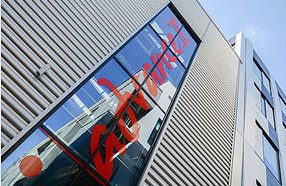Here it is, the innovate UK sponsored report on the Dudley Advance II trial of the IPI Model, the world’s first Insurance Backed Alliancing project, and it’s full of great learning and outcomes.
Starting with the stunning high quality facility which is absolutely fit for the purpose defined by Dudley College;
The 5 storey teaching block with its classrooms and workshops that enable hands on proficiency in advance building technologies such as CNC engineering and manufacture, low carbon installations and BIM applications, which is already operating at student numbers that exceed expectations.
And the linked 4 storey ‘site hangar’ that has attracted industry partnerships with Polypipe and Elements Europe to provide components and assemblies that enable student and in-house technicians to be trained in offloading, assembly and commissioning methods.
Not that it stops there, Advance II with its ‘show and disclose’ features, thermally adaptive building structure, natural ventilation integrated with the highly efficient external façade and controlled by occupants, provides not only a low energy low carbon teaching space but a space which is simultaneously a teaching tool.
As for delivery by the multi-party Alliance Board under the IPI Model, Advance II shows a saving of 6.5% against the investment target and a 99% achievement of the success criteria (with 23% exceeded) and widespread profitability of partners and their supply chains.
Furthermore, Advance II was fully proven and ready to use at occupation and the clinics which carried soft landings into the operational period have been suspended as operators and occupants simply aren’t finding any issues to report! Oh and if you want further confirmation as to what Dudley College thought about it – they are already signed up for their next investment, a c.£26m project for transformational technologies.
Not surprisingly then, I commend this report to you as a text book example of how to “Provide an exemplar of high performing energy efficient space delivered using a leading edge procurement Model” (PQQ October 2014).
So if you are seeking superior performance it’s time to stop dabbling with elemental change and expecting something different to happen and instead embrace fundamental revision of the entire construction delivery model; a big step perhaps but one that has been proven to be worth it.

